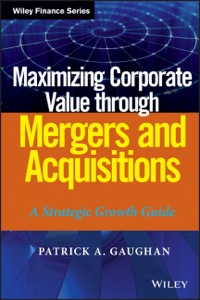




FIFO Method, Two-Department Analysis Muskoge Company uses a process-costing system. The company manufactures a product that is processed in two departments: Molding and Assembly. In the Molding Department, direct materials are added at the beginning of the process; in the Assembly Department, additional direct materials are added at the end of the process. In both departments, conversion costs are incurred uniformly throughout the process. As work is completed, it is transferred out. The following table summarizes the production activity and costs for February: Molding Assembly Beginning inventories: Physical units 10,000 8,000 Costs: Transferred in $45,400 Direct materials $22,000 Conversion costs $13,800 $16,700 Current production: Units started 25,000 ? Units transferred out 30,000 35,000 Costs: Transferred in ? Direct materials $56,750 $39,550 Conversion costs $106,500 $136,500 Percentage of completion: Beginning inventory 40% 50% Ending inventory 80 50 Required: 1. Using the FIFO method, prepare the following for the Molding Department: a. A physical flow schedule Muskoge Company Molding Department Physical Flow Schedule Units to account for: Units, beginning work in process 10,000 Units started in February (transferred in 25,000 Total units to account for 35,000 Units accounted for: Units completed and transferred out: Started and completed 20,000 From beginning work in process 10,000 Units, ending work in process 5,000 Total units accounted for 35,000 b. An equivalent units calculation Total Equivalent Units Direct Materials 25,000 Conversion Costs 30,000 c. Calculation of unit costs. Round your answer to the nearest cent. 5.82 per unit d. Cost of ending work in process and cost of goods transferred out. Cost of ending work in process: $ 25,450 x Cost of goods transferred out: $ 173,100 x e. A cost reconciliation. Costs to account for: Beginning work in process 35,800 Costs incurred 162,750 x Total costs to account for $ 198,550 X Costs accounted for: Transferred out 172,700 x Ending work in process 25,550 Total costs accounted for 198,250 X 2. Prepare journal entries that show the flow of manufacturing costs for the Molding Department. (a) Materials are added at the beginning of the process, (b) conversion costs are recorded, and (c) units are transferred to the Assembly Department. (a) Work in Process-Molding 56,750 Materials Inventory 56,750 (b) Work in Process-Molding 106,500 Conversion Costs-Control 106,500 (c) Work in Process-Assembly 172,700 X Work in Process-Molding 172,700 X 3. Repeat Requirements 1 and 2 for the Assembly Department. a. A physical flow schedule Muskoge Company Assembly Department Physical Flow Schedule Units to account for: Units, beginning work in process 8,000 Units started in February (transferred in) 30,000 38,000 Total units to account for Units accounted for: Units completed and transferred out: Started and completed 27,000 From beginning work in process 8,000 Units, ending work in process 3,000 Total units accounted for 38,000 b. An equivalent units calculation Total Equivalent Units Direct Materials 35,000 Conversion Costs 32,500 Transferred In 30,000 c. Calculation of unit costs. If required, round your intermediate computations and final answer to four decimal places and use the rounded answer in subsequent computations. 11.32 x per unit d. Compute the following. For interim computations, carry amounts out to four decimal places. Round your final answers to the nearest dollar. Cost of ending work in process: 23,910 x Cost of goods transferred out: $ 394,740 X e. A cost reconciliation. When necessary, round equivalent cost per unit to four decimal places, and round all other amounts to the nearest dollar. Costs to account for: Beginning work in process $ Costs incurred Total costs to account for $ Costs accounted for: Transferred out $ Ending work in process X Total costs accounted for Note: Cost reconciliation totals differ by $1 due to rounding error. Prepare journal entries that show the flow of manufacturing costs for the Assembly Department. (a) Materials are added at the end of the process, (b) conversion costs are recorded, and (c) the units are transferred to Finished Goods. (a) Work in Process-Assembly Materials Inventory (b) Work in Process-Assembly Conversion Costs-Control (c) Finished Goods Work in Process-Assembly











